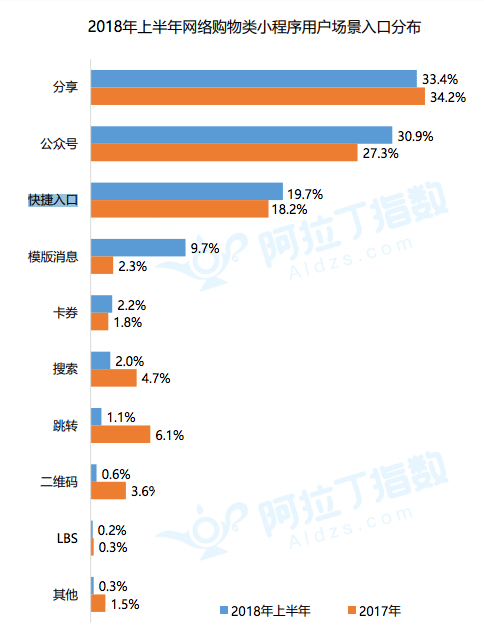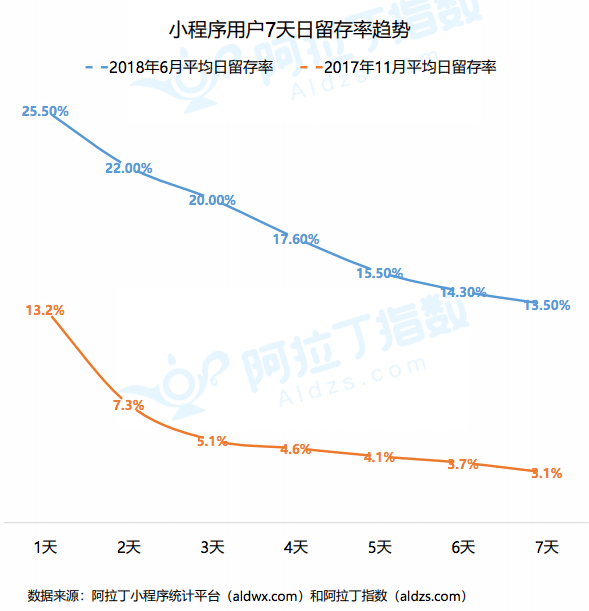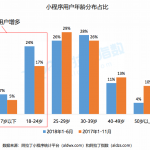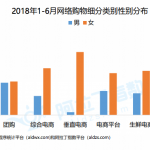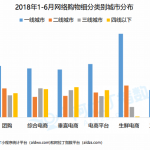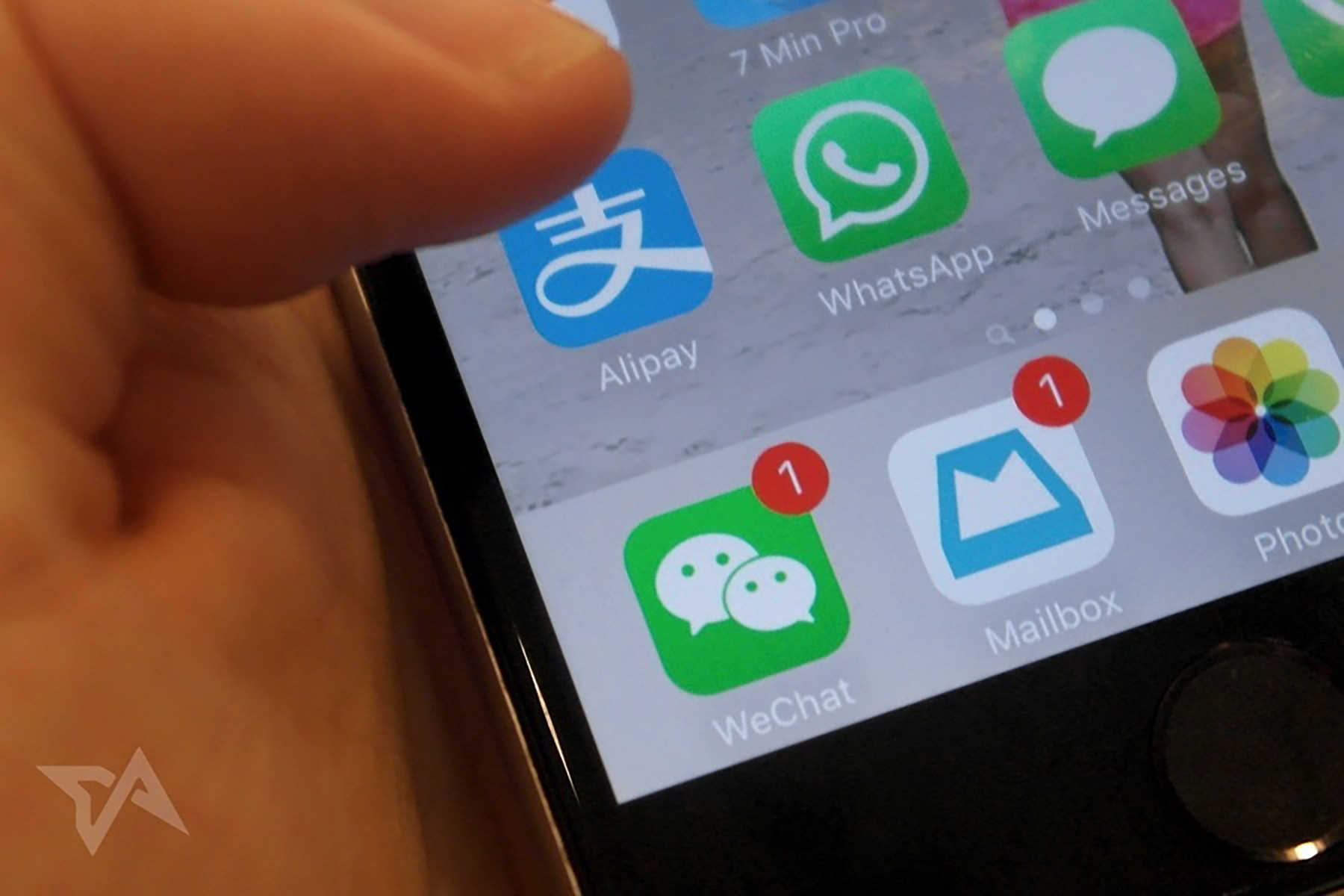Mini-program Discovery
The report done by ALD revealed that as of June 2018, there are now over a million mini-programs (practically doubling from the 580 thousand in January). With the sheer variety of mini-programs projected to rise to 3 million by 2019, it can be difficult to stand out. The report by ALD shows that the most effective way to draw the attention of users for e-commerce mini-programs is through sharing and Official Accounts.
Users can share a mini-program card in a chat group or on WeChat moments, getting their friends and family interested. This is effective, as it is reminiscent of sharing posts on Facebook or retweeting on Twitter. Unlike WeChat games or moments though, users are not naturally inclined to share mini-programs. Thus, brands incorporating incentives for sharing will remain a necessity for maximum exposure.
Close behind with just 2.5% lower prevalence is Official Accounts. This is a popular entry point as a large number of e-commerce mini-programs are operated by brands and KOLs whose OAs have a large follower base. They can leverage these followings to drive traffic to the mini-program shops. While larger OAs are able to better drive traffic to their mini program. Smaller OAs need to focus more on shareability and user retention.
Retention Rates
The second notable statistic found in ALD’s report is that retention rates are increasing. Statistics show that retention rates for June 2018 are at an all-time high. A comparison Y.o.Y with 2017 in the same period revealed that next-day retention rates had almost doubled, from 13.2% to over 25%. Y.o.Y changes were more drastic with seven day retention rates, from 3.1% to 13.5%.
Despite this, keeping users coming back to your mini-program is harder than ever. From having dozens of competing programs of relative quality, to a lack of innovation and benefits cutting interest prematurely. However, there are many small things that brands can do which will make a big difference in the long-term from simply including loyalty programs, to providing limited edition products that could only be purchased through mini-programs exclusively.
User Demographics
Finally, the report done by ALD reveals important demographics for brands.
- E-commerce mini program users are predominantly female (67%). For vertical retailers, this figure skyrockets to 95%.
- Young people using mini-programs between the ages of 18 to 24 have increased from 16% to 24%. Conversely, the number of users 25-29 has decreased from 29% to 26%.
- While socioeconomic status is not specified directly; 68% of mini-program users have a bachelor’s degree or higher.
- The five cities with the most mini-program users are Guangzhou, Beijing, Shanghai, Shenzhen and Chengdu, all of which are first tier cities
- Mini-program demographic differences (gender, age) 2018
- Different types of e-commerce Mini-programs
- Most e-commerce Mini-program users live in first-tier cities
Conclusion
Finally, the ALD report gives several predictions for the growth of mini-programs in the second half of 2018.
- By the end of 2018, there will be three million mini-programs
- The number of daily active users will reach 400 million
- Retention rates will continue to increase
- Tencent will continue making it easier for people for find and access mini-programs
- Mini-program stores will become the new standard for e-commerce




